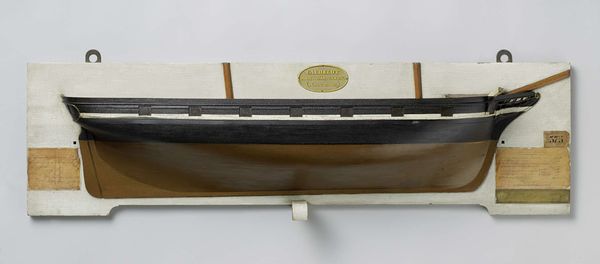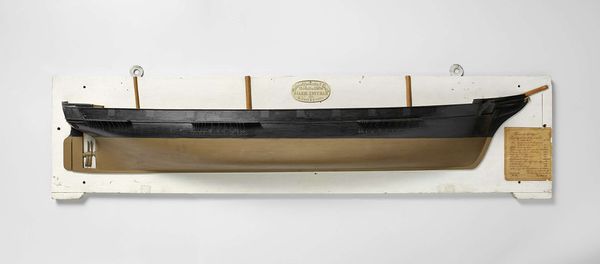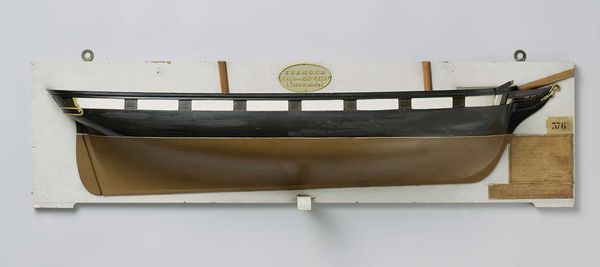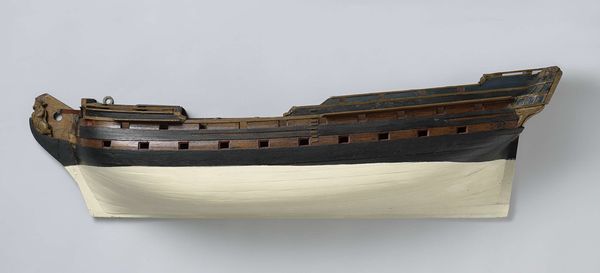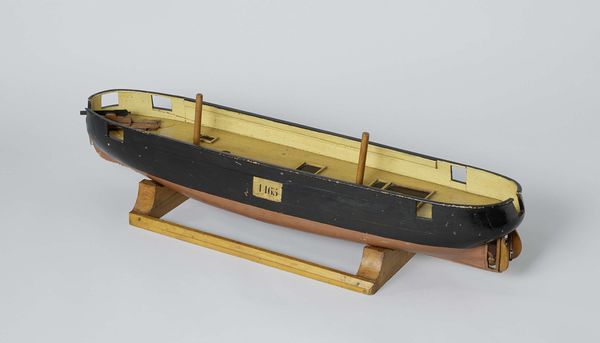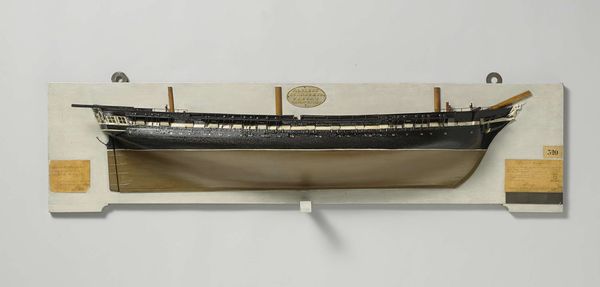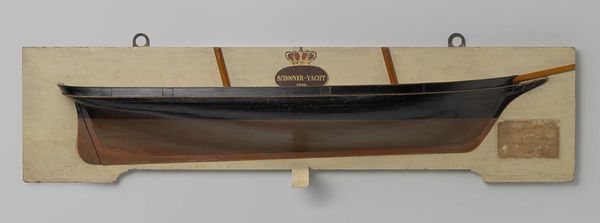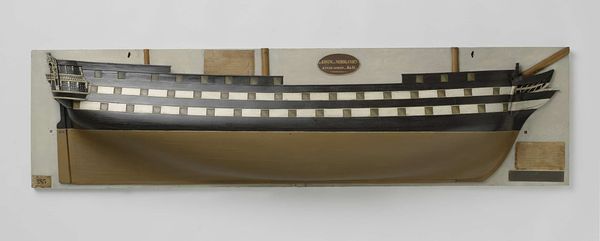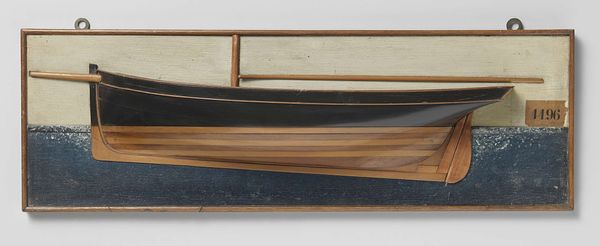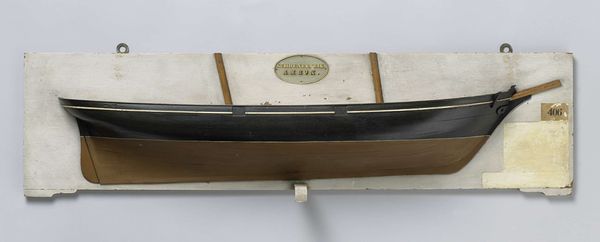
carving, sculpture, wood
#
carving
#
form
#
geometric
#
sculpture
#
line
#
wood
#
realism
Dimensions: height 21.5 cm, width 77.8 cm, depth 10.5 cm
Copyright: Rijks Museum: Open Domain
Editor: So, here we have a wood carving titled "Half Model of a 1-Gun Schooner," created around 1850. It's incredibly detailed, almost photorealistic. I’m struck by the precision of the lines and the elegant form. What’s your take on it? How do you interpret this piece in its historical context? Curator: It's fascinating how these half models offer insight into shipbuilding practices and maritime culture of the mid-19th century. They were often commissioned by shipbuilders to visualize the design and hull shape before commencing the full-scale construction. But consider: who had the resources and power to commission such a thing? It speaks volumes about the maritime economy and the hierarchy involved in shipbuilding. Editor: That's interesting. So this wasn't just a decorative piece, it had a functional purpose in a specific economic environment. Did the display of these models also play a role? Curator: Absolutely. These weren’t merely utilitarian objects; they were also often displayed in the offices of shipbuilders or in maritime-related institutions. Think of it as a form of advertising, showcasing their expertise and craftsmanship to potential clients. The "Schooner Atalante" likely held some prestige, which this model amplified. It served a promotional function, highlighting a blend of technical skill and social status. What kind of audiences would view this? And where? Editor: So, in a way, it's art serving commerce and societal structures? I hadn't considered that the choice of exhibiting or storing would communicate different intentions. I was so caught up on its elegant composition and mastery in its technical rendering. Curator: Precisely! Consider that everything, even realistic form, carries with it these considerations. Seeing a piece like this isn’t just an aesthetic experience. The sculpture carries many meanings for various interested parties. Think about what this means for museums. Editor: That’s definitely given me a new lens through which to appreciate not only this piece but also how museums function today.
Comments
No comments
Be the first to comment and join the conversation on the ultimate creative platform.

